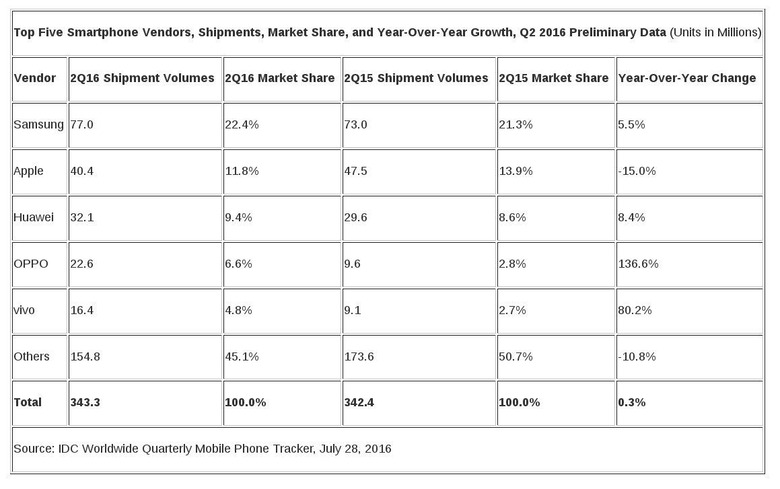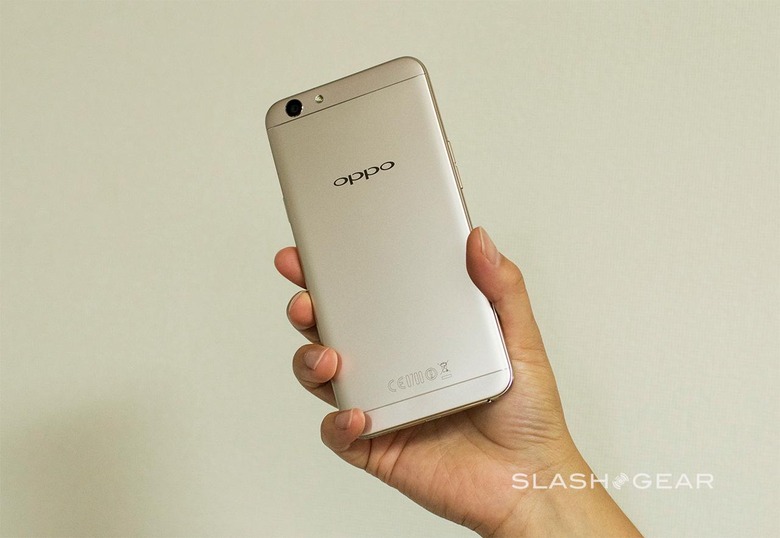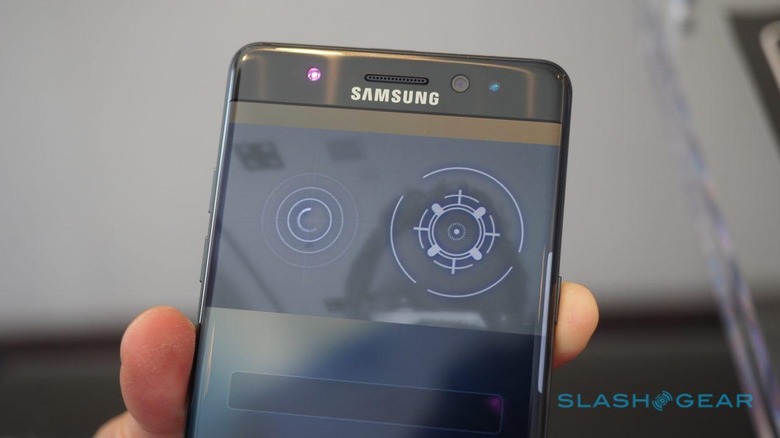Chinese Smartphone Makers Are Putting Old Giants On Notice
Warranted or not, the phrase "Made in China", even in tech, evokes all sorts of negative imagery and emotions, mostly related to the quality or originality of said products. Never mind that nearly almost all smartphones, including the iPhone, could trace their origins to China, be it from components, manufacturing, or both. That bias, however, has led many to underestimate, even ignore the slumbering dragon that has now woken up and is taking the smartphone market by storm, much to the detriment of the old guard like Samsung and Apple.
Growing numbers
Even if you disregard how electronics and smartphones are made in China, Chinese smartphones are still an emerging threat to the well established order of yesteryear's smartphone market. True, if you consider the top smartphones by brand, excluding models that come from the same company, there is a bit more variety. You have Apple, Samsung, LG, Sony, HTC, Huawei, Xiaomi, Motorola, and OnePlus, just to name a very few. Even so, nearly half of that lot are Chinese companies.
Things get even more serious when you consider top smatphone shipments and vendors. By IDC's last count, the top five were composed of Samsung, Apple, Huawei, OPPO, and vivo. If we expand to top 10, you are likely to see Lenovo and Xiaomi somewhere there as well. Again, Chinese brands.

Suffice it to say, the numbers are rising in China's favor, despite the prejudice, and sometimes even evidence, against some of their perceived "sins".
Art and theft
There is an of used, misused, and abused quote that goes "good artists copy, great artists steal." Here's another one: "imitation is the highest form of flattery." Of course, neither are blanket licenses for plagiarism or infringement, but it does give some hint about the creative process.
There is, of course, well founded evidence that there are some device makers, usually the shady ones, that outright copy popular smartphone designs, sometimes even going as far as including a near identical software skin. Whether to dupe unsuspecting buyers or just to cater to the fad, these clones have, sadly, irreparably harmed the reputation of Chinese-made smartphones. And, to some extent, even the likes of Xiaomi and Huawei have, at some point, may have been guilty of the same, though not to the same extent.
In art, you don't exactly burst into the scene fully formed and talented, unless you happen to be one of them "special" people. Everyone as a beginner at one point, and beginning artists tend to copy the masters as part of their training. Not to learn how to counterfeit, of course, but to understand the methods, the process, and even the way of thinking. Eventually, these beginners will advance and develop their own style. And that's what we're seeing with these Chinese smartphone makers.
While some, especially less known ones, still unfortunately live in the "copycat" market, bigger brands have started breaking out into their own unique identities. And these quickly maturing smartphone makers are threatening the once unchallenged reign of the likes of Samsung, Apple, and LG. Because as much as these giants have all the resources and marketing at their disposal, they just can't compete on price.
Bang for buck
Chinese brands are notorious for being cheap, but gone are the days when "cheap" actually meant lower quality. Smartphone hardware is becoming more standard these days, to the point that it is easier to get a hold of such components and stitch them up together to form a comparable, though not completely the same, device. And best of all, they're actually more affordable.
Take, for example, brands like OPPO and Umi. OPPO has actually been at this game far longer than many might realize, but of late it has been stepping up its game and its push, especially Westward. The OPPO F1s, which we just reviewed, is an example of just how far these companies have come. Although a mid-range smartphone, the F1s can definitely hold its head up high in that category against similar offerings from more expensive brands.

Umi's case is even more impressive, especially as a newer player in the race. You'll hear about it on our upcoming review, but suffice it to say, it has truly surprised us and broken our expectations and prejudices. And it isn't going to take you hundreds of dollars to find that out.
Consumers today are becoming wiser, no longer simply basing purchases on brands but on features as well. And as Chinese smartphones like the honor 8 are starting to offer those very same features at less cost, then the old guard have very good reason to be wary of the new challengers in the market.
No where to go but up
Of course, there are reasons why smartphones from Samsung, Apple, Sony, and others are that darn expensive, but those reasons my might not exactly fly by consumers, whether there is a reasonable basis for those or not.
The biggest reason usually bandied about is the cost of research and development, which also usually includes the design of the device in addition to its hardware and features. It is indeed not that cheap to develop new technologies or fund the creation of new designs. But, in a way, these companies are asking consumers to shoulder the costs of R&D. The thing is, once the technology has become a commodity, prices for the hardware go down and no new R&D is involved.

Another often cited, or at least implied, reason is marketing. Big companies spend million in marketing, sometimes hiring big actors, even if the product eventually flops (hello RDJ). But companies like Xiaomi and OnePlus have proven you don't exactly need million dollar budgets for marketing. Especially with the strength of social networking behind you, sometimes the best vehicle are your consumers themselves.
The problem for giant companies is that they can't really pull down their prices without either suffering a loss or affecting the features of their product. The Sony Xperia X, for example, may be cheaper or at least on par with this year's flagships, but its feature set is actually less. Even if the volumes of Samsung and Apple devices sold remained the same, lower prices would immediately mean lower profits as well.
In contrast, many of these Chinese companies continue to play around the same price point, sometimes even going lower, but never going obscenely higher in one jump. They are still able to compete by volume, and, given the rate they are improving, by value as well.
Wrap-up
Some analysts believe that the smartphone market has reached a plateau, which is just a nice way of saying it's slowing down on the way to stagnation. That is a death knell for giant companies who, given their size, can't really move fast enough to change course. It is, however, a golden opportunity for Chinese upstarts to wrest control from them, and we are seeing the beginnings of that revolution already.
Xiaomi, Huawei/honor, Lenovo/Moto, OPPO, vivo, Umi, LeEco. These are just some of the names hailing from the East that are hitting mainstream media in the West. While they will unlikely be able to topple the top two brands within two or even four years, they are slowly eroding their hold on the market. And for companies like Sony and HTC who have seen much better days, these Chinese smartphone makers spell even more trouble.
